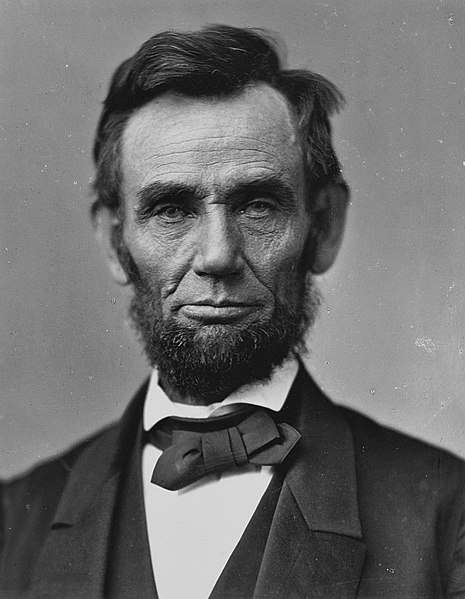Ursula Burns: A Trailblazing Leader’s Lessons on Diversity, Innovation, and Collaboration

From Humble Beginnings to Fortune 500 CEO: The Leadership Journey of Ursula Burns
In the world of business and leadership, Ursula Burns stands out as an icon, a trailblazer, and a visionary. Born and raised in a housing project in New York City, Burns rose to the pinnacle of the business world as the CEO of Xerox Corporation, becoming the first Black woman to lead a Fortune 500 company.
Burns’ leadership lessons and stories are an inspiration to many, and her legacy continues to influence the business world today. Her experiences as a Black woman in a male-dominated industry, her approach to overcoming obstacles, and her focus on diversity and inclusion are just some of the topics that make her leadership journey remarkable.
In this article, we will explore Burns’ life, leadership style, challenges, and legacy in-depth. We will delve into the lessons learned from her leadership, and the impact she has had on the business world. Our aim is to inspire current and future leaders to learn from Burns’ experience and apply her leadership principles in their own lives and careers.
The importance of leadership lessons and stories cannot be overstated. Learning from the successes and failures of others is a critical part of personal and professional development. Leaders who take the time to study the experiences of successful leaders like Burns can gain valuable insights into the qualities and characteristics that make a great leader.
Moreover, the stories of successful leaders like Burns can provide inspiration and motivation to those facing challenges and obstacles in their own lives and careers. Burns’ story is a testament to the power of perseverance, hard work, and strategic thinking, and her leadership principles offer valuable lessons for anyone seeking to achieve success in any field.
In the following sections, we will examine Burns’ background and early life, her leadership lessons and stories, the challenges and obstacles she faced, her leadership style, and her legacy and impact on the business world. Through this exploration, we hope to provide a comprehensive overview of Burns’ leadership journey and its relevance for today’s leaders.
Background and Early Life
Ursula Burns was born on September 20, 1958, in the Baruch Houses, a housing project in Manhattan’s Lower East Side. She was the second of three children of Panamanian immigrants, raised by her mother after her father left the family when Burns was just a child.
Growing up in the Baruch Houses, Burns experienced poverty and limited opportunities firsthand. However, she was determined to succeed and saw education as her ticket out of poverty. She attended Cathedral High School, an all-girls Catholic school in Manhattan, where she excelled academically and earned a scholarship to pursue a degree in mechanical engineering at the Polytechnic Institute of New York University.
After graduating from Polytechnic Institute in 1980 with a Bachelor of Science degree in mechanical engineering, Burns joined Xerox Corporation as a summer intern. She quickly rose through the ranks, taking on various roles in engineering, product development, and management.
Burns’ early career at Xerox was marked by her exceptional technical skills, her strong work ethic, and her ability to lead teams effectively. She demonstrated a talent for innovation and problem-solving, and her contributions to Xerox’s product development earned her recognition and promotions.
Burns’ leadership potential was recognized early on, and she was given the opportunity to participate in Xerox’s executive development program, which prepared her for leadership roles in the company. By the mid-1990s, Burns had risen to become a senior executive at Xerox, leading the company’s global manufacturing operations and supply chain management.
In 2009, Burns was appointed as the CEO of Xerox Corporation, succeeding Anne Mulcahy. She became the first Black woman to lead a Fortune 500 company, a milestone achievement in the business world. During her tenure as CEO, Burns led Xerox through a major transformation, focusing on innovation and growth, and successfully navigating the company through the global economic recession.
Burns’ background and early life shaped her leadership journey in significant ways. Her experience growing up in poverty and facing obstacles and adversity gave her a unique perspective on the importance of hard work, perseverance, and resilience. Her education and technical skills provided her with a solid foundation for her career, and her leadership potential was nurtured and developed through Xerox’s executive development program.
Overall, Burns’ background and early life provided her with the skills, experience, and perspective that would prove invaluable in her leadership journey. In the following sections, we will explore the leadership lessons and stories that emerged from Burns’ experiences as a leader at Xerox, the challenges and obstacles she faced, her leadership style, and her legacy and impact on the business world.
Leadership Lessons and Stories
Ursula Burns’ leadership journey at Xerox is marked by several key lessons and stories that offer valuable insights into what it takes to succeed as a leader. In this section, we will explore some of these lessons and stories in more detail.
The importance of diversity and inclusion
As a Black woman in the business world, Burns understood the importance of diversity and inclusion first-hand. She recognized the need for companies to embrace diversity and create a culture of inclusion, not only because it is the right thing to do but because it is essential for business success.
At Xerox, Burns implemented several initiatives aimed at promoting diversity and inclusion, including a diversity advisory board and a program to increase the number of women and minorities in leadership roles. She also made a conscious effort to promote diversity in Xerox’s supplier network, recognizing the importance of supplier diversity for economic growth and social progress.
Burns’ leadership in this area has had a significant impact on the business world, inspiring other companies to follow suit and promoting diversity and inclusion as a core value for business success.
The value of perseverance and hard work
Burns’ rise from an intern to the CEO of Xerox is a testament to the power of perseverance and hard work. Despite facing obstacles and setbacks, Burns remained focused on her goals, worked tirelessly to achieve them, and never gave up.
One of the most notable examples of Burns’ perseverance was her leadership during the global economic recession. As Xerox struggled to stay afloat, Burns implemented a bold transformation strategy that focused on innovation, cost reduction, and growth. Her efforts paid off, and Xerox emerged from the recession stronger and more competitive than ever.
The power of strategic thinking
Burns’ strategic thinking and vision for the future of Xerox were critical to the company’s success during her tenure as CEO. She recognized the need for Xerox to evolve and adapt to changing market conditions and technological advancements, and she led the company through several key strategic initiatives.
One of the most significant strategic moves under Burns’ leadership was Xerox’s acquisition of Affiliated Computer Services (ACS), a move that positioned Xerox as a leader in the business process outsourcing market. Burns’ vision and strategic thinking helped Xerox stay ahead of the curve and remain competitive in a rapidly changing business landscape.
Ursula Burns’ leadership journey at Xerox offers valuable lessons and stories for aspiring and current leaders. Her emphasis on diversity and inclusion, her perseverance and hard work, and her strategic thinking and vision for the future provide a blueprint for success in any field.
Challenges and Obstacles
As a Black woman in a male-dominated industry, Ursula Burns faced numerous challenges and obstacles throughout her career. In this section, we will explore some of these challenges and how Burns overcame them.
Navigating a male-dominated industry
One of the most significant challenges Burns faced was navigating the business world as a Black woman. She was often the only woman or person of color in the room, and she had to work twice as hard to earn the respect and recognition of her peers.
Despite these challenges, Burns remained focused on her goals and worked tirelessly to prove her worth. She approached every challenge with a determined and fearless attitude, refusing to let gender or race bias stand in her way.
Burns’ approach to overcoming gender and racial biases serves as a model for other women and minorities in the business world. Her perseverance and determination demonstrate the importance of standing up for oneself and never giving up in the face of adversity.
Overcoming setbacks
Throughout her career, Burns faced numerous setbacks and challenges, from product failures to economic recessions. However, she refused to let these setbacks defeat her, instead using them as opportunities to learn and grow.
One of the most significant setbacks Burns faced was Xerox’s decline in the early 2000s. The company was struggling to stay afloat, and many analysts predicted its demise. However, Burns refused to give up on Xerox and instead implemented a bold transformation strategy that focused on innovation, cost reduction, and growth.
Her leadership during this challenging time not only saved Xerox from bankruptcy but also positioned the company for future success. Burns’ approach to overcoming setbacks demonstrates the importance of resilience, adaptability, and strategic thinking in the face of adversity.
Ursula Burns’ experience navigating a male-dominated industry and overcoming setbacks provides valuable insights for aspiring and current leaders. Her determination and resilience in the face of bias and adversity serve as a model for women and minorities in the business world, and her approach to overcoming setbacks demonstrates the importance of strategic thinking and adaptability in times of crisis.
Leadership Style
Ursula Burns’ leadership style at Xerox was marked by a focus on transformational and collaborative leadership. In this section, we will explore these two key aspects of her leadership style in more detail.
Transformational Leadership
Burns’ focus on transformational leadership was evident in her emphasis on innovation and growth. She recognized the importance of staying ahead of the curve in a rapidly changing business landscape and encouraged her team to take risks and think outside the box.
Under Burns’ leadership, Xerox invested heavily in research and development, launching several new products and services that positioned the company as a leader in its field. Burns’ willingness to take risks and embrace innovation helped Xerox stay ahead of the competition and remain relevant in an increasingly digital world.
Burns also placed a strong emphasis on employee development and engagement, recognizing the importance of empowering her team to achieve their full potential. She created opportunities for employees to learn and grow, implemented performance metrics to measure progress, and provided regular feedback to help employees improve.
Overall, Burns’ focus on transformational leadership helped Xerox achieve significant growth and success during her tenure as CEO.
Collaborative Leadership
Burns’ collaborative leadership style was evident in her approach to decision-making and building partnerships and alliances. She recognized the importance of working with others to achieve shared goals and encouraged collaboration at all levels of the organization.
Burns believed that the best decisions were made through collaboration and consensus-building, rather than top-down directives. She created a culture of open communication and encouraged feedback from all levels of the organization, creating an environment where everyone’s ideas and perspectives were valued.
Burns’ collaborative leadership style also extended to Xerox’s relationships with its customers, suppliers, and partners. She recognized the importance of building strong partnerships and alliances to achieve mutual success and positioned Xerox as a trusted and reliable partner in the business world.
Overall, Burns’ collaborative leadership style helped foster a culture of innovation, growth, and collaboration at Xerox and positioned the company for long-term success.
Ursula Burns’ leadership style at Xerox was characterized by a focus on transformational and collaborative leadership. Her emphasis on innovation, growth, and employee development, combined with her collaborative approach to decision-making and partnerships, helped Xerox achieve significant success during her tenure as CEO. Her leadership style offers valuable lessons for aspiring and current leaders looking to build successful, sustainable organizations.
Legacy and Impact
Ursula Burns’ leadership journey at Xerox has had a significant impact on the business world, inspiring and influencing countless leaders and organizations. In this section, we will explore Burns’ legacy and impact, including her recognition as a trailblazer and her role in promoting diversity and inclusion.
Burns’ influence on the business world
Burns’ rise from an intern to the CEO of Xerox is a testament to her leadership abilities and her commitment to hard work, perseverance, and strategic thinking. Her approach to leadership and her achievements at Xerox have earned her recognition as a trailblazer and a role model for aspiring and current leaders.
In 2014, President Barack Obama appointed Burns as the Chair of the White House National Museum of African American History and Culture, recognizing her contributions to the business world and to society as a whole. Burns has also been recognized by Forbes, Fortune, and other prominent publications as one of the most powerful women in business.
Burns’ influence on the business world extends beyond her own accomplishments, however. Her leadership journey has inspired and influenced countless other leaders and organizations, particularly those seeking to promote diversity and inclusion in the workplace. Burns’ commitment to diversity and inclusion has served as a model for other companies, inspiring them to embrace these values and create more equitable and inclusive workplaces.
Lessons learned from Burns’ leadership
The lessons learned from Ursula Burns’ leadership journey at Xerox are numerous and far-reaching. Her emphasis on diversity and inclusion, her perseverance and hard work, her strategic thinking and vision, and her collaborative leadership style offer valuable insights for aspiring and current leaders.
Burns’ commitment to diversity and inclusion serves as a model for other leaders and organizations seeking to create more equitable and inclusive workplaces. Her approach to overcoming setbacks and challenges demonstrates the importance of resilience, adaptability, and strategic thinking in times of crisis. And her focus on employee development and engagement highlights the importance of empowering and investing in employees to achieve shared goals.
Overall, Ursula Burns’ leadership journey at Xerox offers valuable lessons and inspiration for anyone seeking to achieve success in any field. Her legacy and impact on the business world are a testament to the power of leadership and the importance of perseverance, strategic thinking, and collaboration in achieving shared goals.
Ursula Burns’ leadership journey at Xerox is a remarkable story of perseverance, hard work, and strategic thinking. Her emphasis on diversity and inclusion, her commitment to innovation and growth, and her collaborative leadership style have had a significant impact on the business world, inspiring and influencing countless other leaders and organizations. Burns’ leadership journey offers valuable lessons for anyone seeking to achieve success and make a positive impact in their own lives and careers.
Ursula Burns’ Legacy: A Model for Perseverance, Diversity, and Collaboration in Leadership
Ursula Burns’ leadership journey at Xerox is an inspiring and remarkable story of perseverance, hard work, and strategic thinking. From her humble beginnings in a New York City housing project to her rise as the first Black woman CEO of a Fortune 500 company, Burns’ leadership journey offers valuable lessons and inspiration for aspiring and current leaders.
Throughout her career, Burns demonstrated a commitment to diversity and inclusion, innovation and growth, and collaborative leadership. Her approach to leadership and her achievements at Xerox have earned her recognition as a trailblazer and a role model for aspiring and current leaders.
Burns’ emphasis on diversity and inclusion serves as a model for other leaders and organizations seeking to create more equitable and inclusive workplaces. Her approach to overcoming setbacks and challenges demonstrates the importance of resilience, adaptability, and strategic thinking in times of crisis. And her focus on employee development and engagement highlights the importance of empowering and investing in employees to achieve shared goals.
Burns’ legacy and impact on the business world are a testament to the power of leadership and the importance of perseverance, strategic thinking, and collaboration in achieving shared goals. Her leadership journey offers valuable lessons for anyone seeking to achieve success and make a positive impact in their own lives and careers.
In conclusion, Ursula Burns’ leadership journey is a shining example of what is possible when one is committed to their goals, willing to work hard, and willing to take risks. Her story is a testament to the power of resilience, perseverance, and strategic thinking in overcoming adversity and achieving success. The lessons and stories from her leadership journey offer valuable insights and inspiration for aspiring and current leaders looking to make a positive impact in their own lives and in the world.





